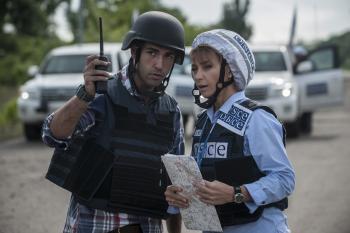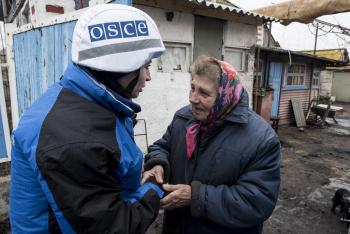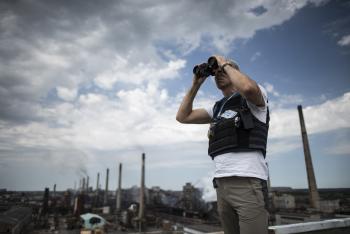The picture language of each brand should reflect the mission and tone of voice. Images are a direct reflection of the brand personality and demonstrate our approach towards our mission.
OSCE current image bank is available on the website Media Library.
Key imagery principles
Capture emotions
We should portray emotions that trigger an action. Pictures need to tell a story and depict the OSCE mission.
Respect dignity and privacy
When demonstrating a problem, the highest priority should be given to handle respectfully people's and children's privacy. Photography must always be respectful of people and portray them in a dignified manner, not as victims or passive beneficiaries.
Diversity
We should portray ideally culture diversity, different ages, gender, surroundings and environment.
Authenticity
Authentic situations, expressions and emotions should be portrayed. Try to avoid staged photography.
Considerations
Show the impact
Photography should tell a story. The preference is to choose imagery that shows the impact of OSCE work and the people involved in our work.
Credits
Credit the photographers and sources. All photos should have credits.
Captions
Write informative and clear captions. All photography requires short and clear captions providing minimum information about the person(s) portrayed and their context: Full name, title, assignment, country. Brief description. Credits and date.
Use high-quality photos
Shoot high-resolution photography, when possible. When assigning a freelancer, RAW format is desirable.
Consent
To protect the identities of individuals or organisations, written consent is needed when capturing photographic or video footage.
Download our photo/video policy & guidelines and declaration of consent for photographs, videos and audio recordings:





